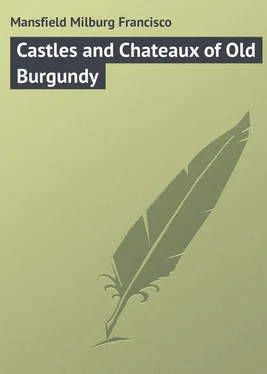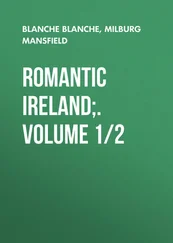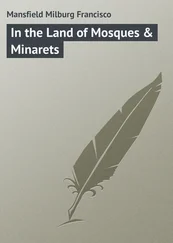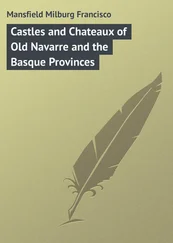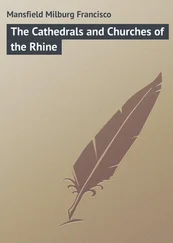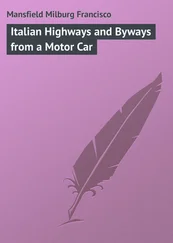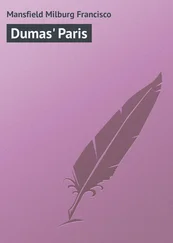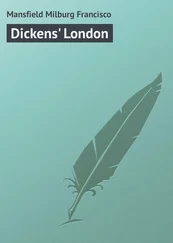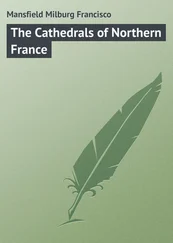Milburg Mansfield - Castles and Chateaux of Old Burgundy
Здесь есть возможность читать онлайн «Milburg Mansfield - Castles and Chateaux of Old Burgundy» — ознакомительный отрывок электронной книги совершенно бесплатно, а после прочтения отрывка купить полную версию. В некоторых случаях можно слушать аудио, скачать через торрент в формате fb2 и присутствует краткое содержание. ISBN: , Жанр: foreign_prose, на английском языке. Описание произведения, (предисловие) а так же отзывы посетителей доступны на портале библиотеки ЛибКат.
- Название:Castles and Chateaux of Old Burgundy
- Автор:
- Жанр:
- Год:неизвестен
- ISBN:http://www.gutenberg.org/ebooks/46678
- Рейтинг книги:4 / 5. Голосов: 1
-
Избранное:Добавить в избранное
- Отзывы:
-
Ваша оценка:
- 80
- 1
- 2
- 3
- 4
- 5
Castles and Chateaux of Old Burgundy: краткое содержание, описание и аннотация
Предлагаем к чтению аннотацию, описание, краткое содержание или предисловие (зависит от того, что написал сам автор книги «Castles and Chateaux of Old Burgundy»). Если вы не нашли необходимую информацию о книге — напишите в комментариях, мы постараемся отыскать её.
Castles and Chateaux of Old Burgundy — читать онлайн ознакомительный отрывок
Ниже представлен текст книги, разбитый по страницам. Система сохранения места последней прочитанной страницы, позволяет с удобством читать онлайн бесплатно книгу «Castles and Chateaux of Old Burgundy», без необходимости каждый раз заново искать на чём Вы остановились. Поставьте закладку, и сможете в любой момент перейти на страницу, на которой закончили чтение.
Интервал:
Закладка:
Francis Miltoun
Castles and Chateaux of Old Burgundy
CHAPTER I
THE REALM OF THE BURGUNDIANS
“La plus belle Comté, c’est Flandre;
La plus belle duché, c’est Bourgogne,
Le plus beau royaume, c’est France.”
THIS statement is of undeniable merit, as some of us, who so love la belle France – even though we be strangers – well know.
The Burgundy of Charlemagne’s time was a much vaster extent of territory than that of the period when the province came to play its own kingly part. From the borders of Neustria to Lombardia and Provence it extended from the northwest to the southeast, and from Austrasia and Alamannia in the northeast to Aquitania and Septimania in the southwest. In other words, it embraced practically the entire watershed of the Rhône and even included the upper reaches of the Yonne and Seine and a very large portion of the Loire; in short, all of the great central plain lying between the Alps and the Cevennes.
The old Burgundian province was closely allied topographically, climatically and by ties of family, with many of its neighbouring political divisions. Almost to the Ile de France this extended on the north; to the east, the Franche Comté was but a dismemberment; whilst the Nivernais and the Bourbonnais to the west, through the lands and influence of their seigneurs, encroached more or less on Burgundy or vice versa if one chooses to think of it in that way. To the southeast Dombes, Bresse and Bugey, all closely allied with one another, bridged the leagues which separated Burgundy from Savoy, and, still farther on, Dauphiny.
The influence of the Burgundian spirit was, however, over all. The neighbouring states, the nobility and the people alike, envied and emulated, as far as they were able, the luxurious life of the Burgundian seigneurs later. If at one time or another they were actually enemies, they sooner, in many instances at least, allied themselves as friends or partisans, and the manner of life of the Burgundians of the middle ages became their own.
Not in the royal domain of France itself, not in luxurious Touraine, was there more love of splendour and the gorgeous trappings of the ceremonial of the middle ages than in Burgundy. It has ever been a land of prosperity and plenty, to which, in these late days, must be added peace, for there is no region in all France of to-day where there is more contentment and comfort than in the wealthy and opulent Departments of the Côte d’Or and the Saône and Loire which, since the Revolution, have been carved out of the very heart of old Burgundy.
The French themselves are not commonly thought to be great travellers, but they love “ le voyage ” nevertheless, and they are as justifiably proud of their antiquities and their historical monuments as any other race on earth. That they love their patrie , and all that pertains to it, with a devotion seemingly inexplicable to a people who go in only for “spreadeaglism,” goes without saying.
“Qu’il est doux de courir le monde!
Ah! qu’il est doux de voyager!”
sang the author of the libretto of “Diamants de la Couronne,” and he certainly expressed the sentiment well.
The Parisians themselves know and love Burgundy perhaps more than any other of the old mediæval provinces; that is, they seemingly love it for itself; such minor contempt as they have for a Provençal, a Norman or a Breton does not exist with regard to a Bourguignon.
Said Michelet: “Burgundy is a country where all are possessed of a pompous and solemn eloquence.” This is a tribute to its men. And he continued: “It is a country of good livers and joyous seasons” – and this is an encomium of its bounty.
The men of the modern world who own to Burgundy as their patrie are almost too numerous to catalogue, but all will recall the names of Buffon, Guyton de Morveau, Monge and Carnot, Rude, Rameau, Sambin, Greuze and Prud’hon.
In the arts, too, Burgundy has played its own special part, and if the chateau-builder did not here run riot as luxuriously as in Touraine, he at least builded well and left innumerable examples behind which will please the lover of historic shrines no less than the more florid Renaissance of the Loire.
In the eighteenth century, the heart of Burgundy was traversed by the celebrated “ coches d’eau ” which, as a means of transportation for travellers, was considerably more of an approach to the ideal than the railway of to-day. These “ coches d’eau ” covered the distance from Chalon to Lyon via the Saône. One reads in the “Almanach de Lyon et des Provinces de Lyonnois, Forêz et Beaujolais, pour l’année bissextile 1760,” that two of these “ coches ” each week left Lyon, on Mondays and Thursdays, making the journey to Chalon without interruption via Trévoux, Mâcon and Tournus. From Lyon to Chalon took the better part of two and a half days’ time, but the descent was accomplished in less than two days. From Chalon, by “ guimbarde ,” it was an affair of eight days to Paris via Arnay-le-Duc, Saulieu, Vermanton, Auxerre, Joigny and Sens. By diligence all the way, the journey from the capital to Lyon was made in five days in summer and six in winter. Says Mercier in his “Tableau de Paris”: “When Sunday came on, the journey mass was said at three o’clock in the morning at some tavern en route.”
The ways and means of travel in Burgundy have considerably changed in the last two hundred years, but the old-time flavour of the road still hangs over all, and the traveller down through Burgundy to-day, especially if he goes by road, may experience not a little of the charm which has all but disappeared from modern France and its interminably straight, level, tree-lined highways. Often enough one may stop at some old posting inn famous in history and, as he wheels his way along, will see the same historic monuments, magnificent churches and chateaux as did that prolific letter writer, Madame de Sévigné.
Apropos of these mediæval and Renaissance chateaux scattered up and down France, the Sieur Colin, in 1654, produced a work entitled “Le Fidèle Conducteur pour les Voyages en France” in which he said that every hillside throughout the kingdom was dotted with a “ belle maison ” or a “ palais .” He, too, like some of us of a later day, believed France the land of chateaux par excellence .
Evelyn, the diarist (1641-1647), thought much the same thing and so recorded his opinion.
The Duchesse de Longueville, (1646-1647), on her journey from Paris called the first chateau passed on the way a “ palais des fées ,” which it doubtless was in aspect, and Mlle. de Montpensier, in a lodging with which she was forced to put up at Saint Fargeau, named it “ plus beau d’un chateau ,” – a true enough estimate of many a maison bourgeois of the time. At Pouges-les-Eaux, in the Nivernais, just on the borders of Burgundy, whilst she was still travelling south, Mlle. de Montpensier put up at the chateau of a family friend and partook of an excellent dinner. This really speaks much for the appointments of the house in which she stopped, though one is forced to imagine the other attributes. She seemingly had arrived late, for she wrote: “I was indeed greatly surprised and pleased with my welcome; one could hardly have expected such attentions at so unseemly an hour.”
La Fontaine was a most conscientious traveller and said some grand things of the Renaissance chateaux-builders of which literary history has neglected to make mention.
Lippomano, the Venetian Ambassador of the sixteenth century, professed to have met with a population uncivil and wanting in probity, but he exalted, nevertheless, to the highest the admirable chateaux of princes and seigneurs which he saw on the way through Burgundy. Zinzerling, a young German traveller, in the year 1616, remarked much the same thing, but regretted that a certain class of sight-seers was even then wont to scribble names in public places. We of to-day who love old monuments have, then, no more reason to complain than had this observant traveller of three hundred years ago.
Читать дальшеИнтервал:
Закладка:
Похожие книги на «Castles and Chateaux of Old Burgundy»
Представляем Вашему вниманию похожие книги на «Castles and Chateaux of Old Burgundy» списком для выбора. Мы отобрали схожую по названию и смыслу литературу в надежде предоставить читателям больше вариантов отыскать новые, интересные, ещё непрочитанные произведения.
Обсуждение, отзывы о книге «Castles and Chateaux of Old Burgundy» и просто собственные мнения читателей. Оставьте ваши комментарии, напишите, что Вы думаете о произведении, его смысле или главных героях. Укажите что конкретно понравилось, а что нет, и почему Вы так считаете.
